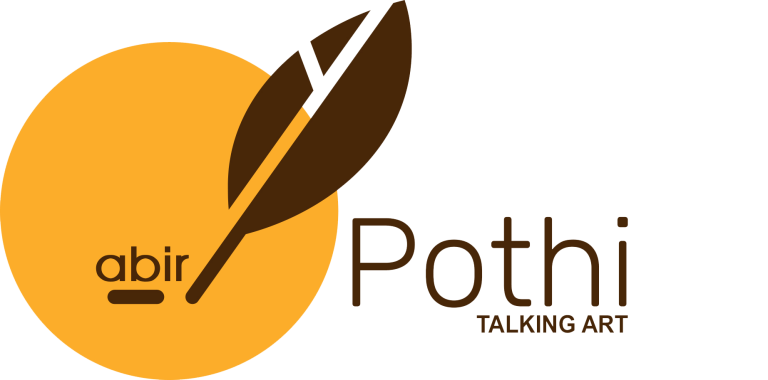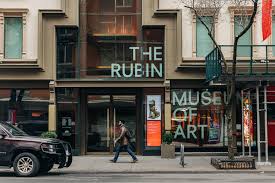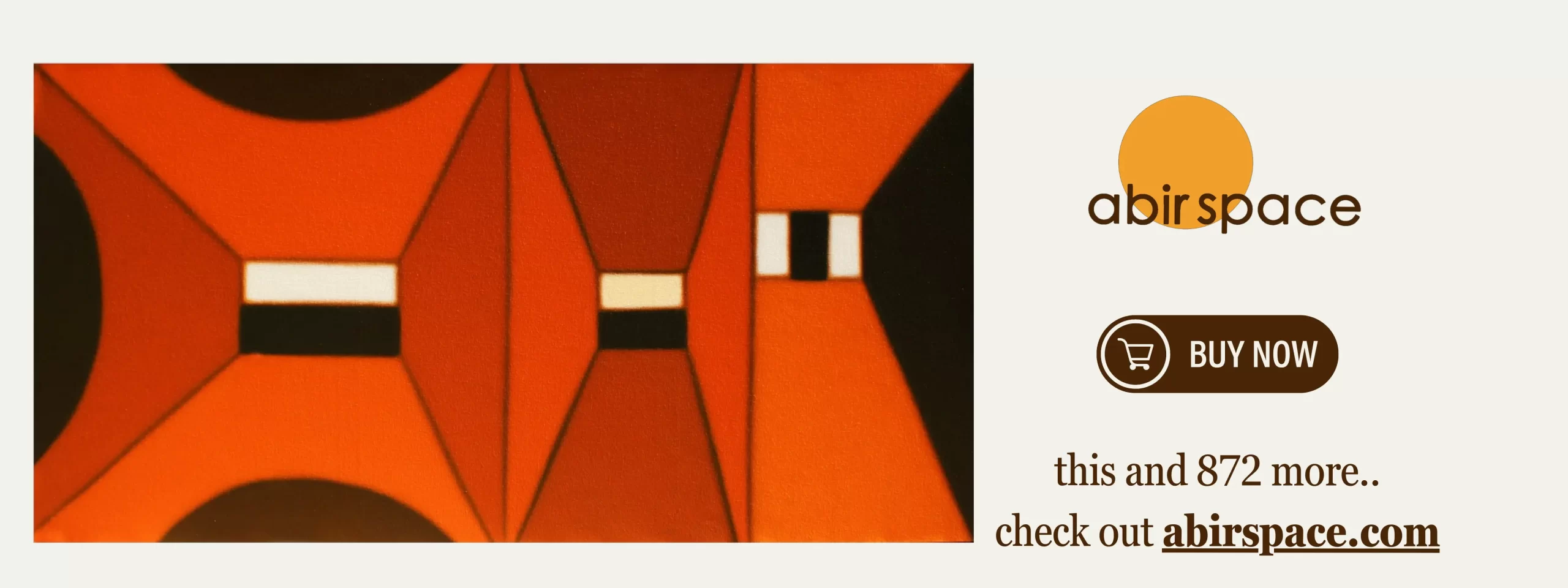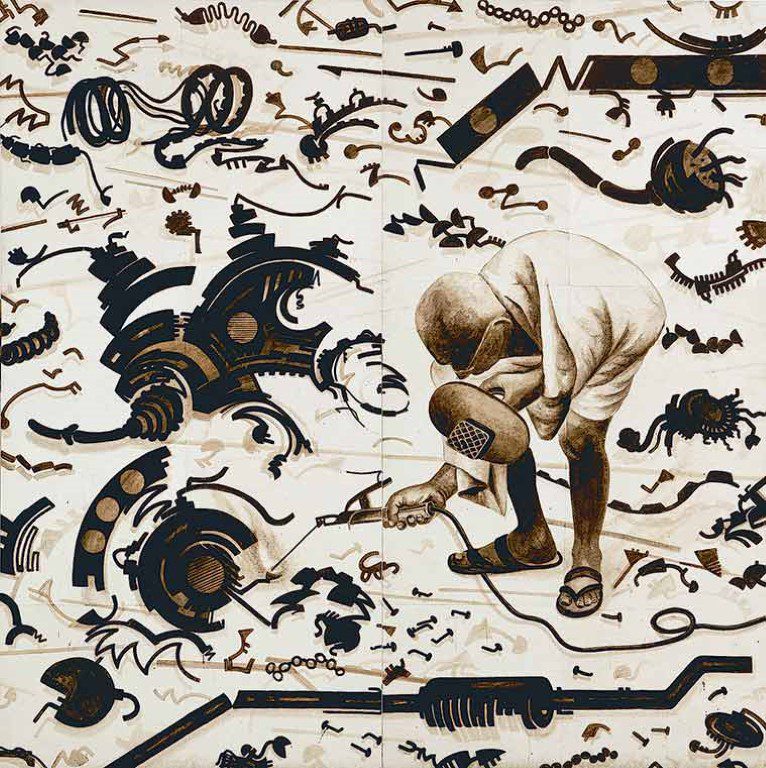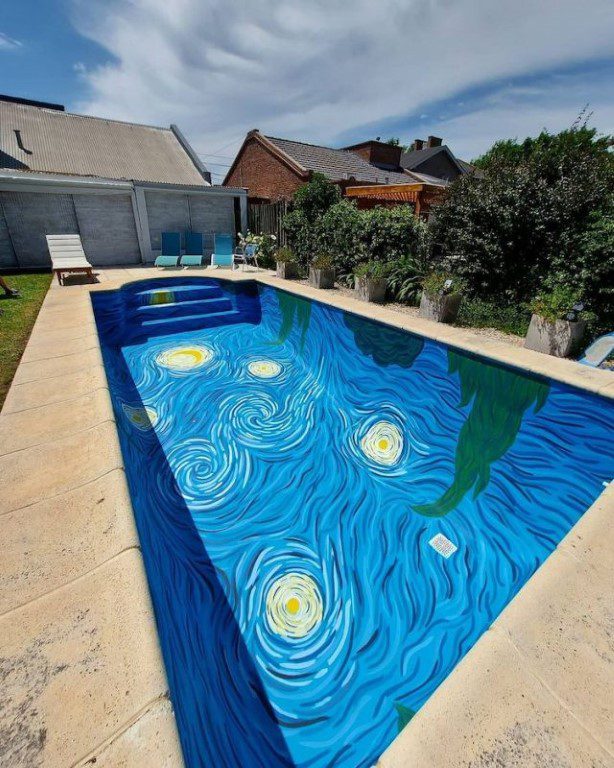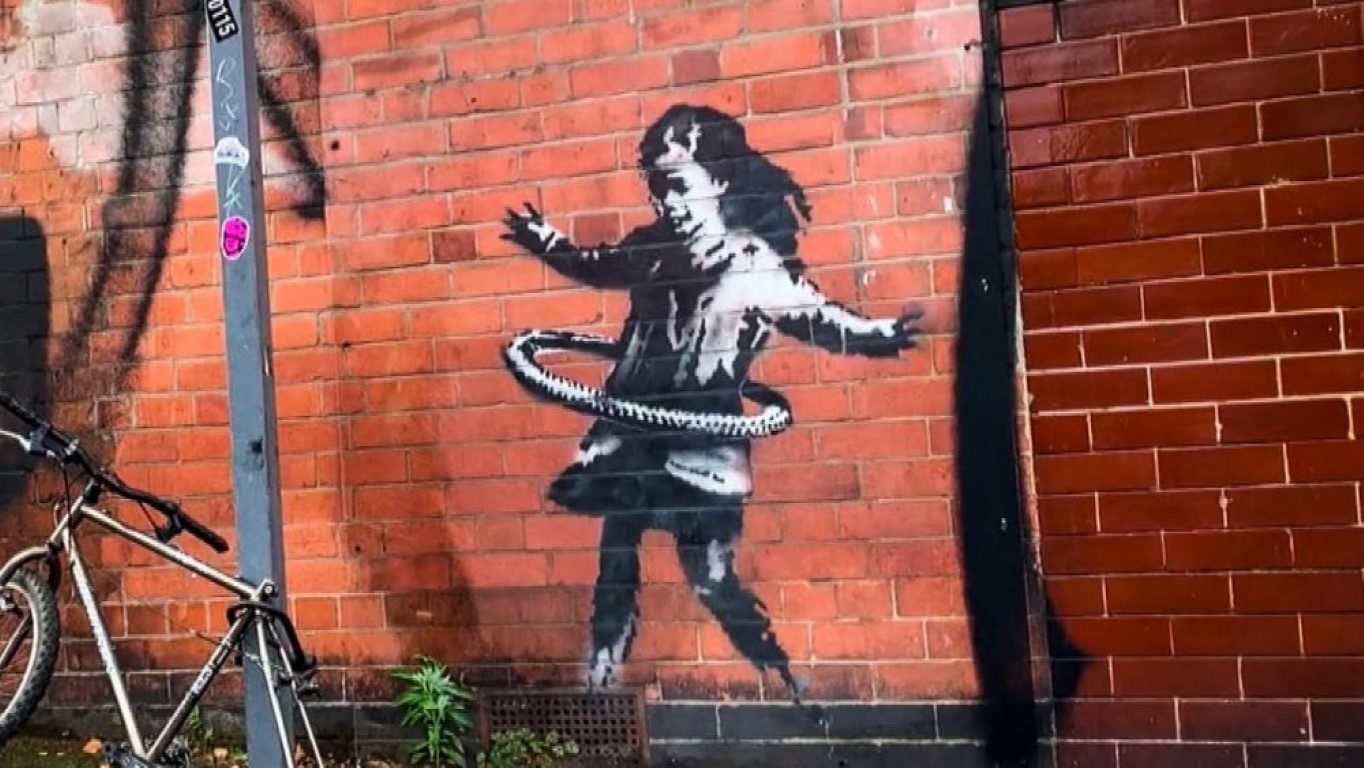The Rubin Museum of Himalayan Art, which transitioned to a “global museum” model after closing its physical New York location in 2024, has revealed the winner of its annual art prize along with recipients of its research and art project grants.
Khadhok – Tibetan Artists’ Collective has been awarded the 2025 Rubin Museum Himalayan Art Prize. The annual prize, launched in 2024, comes with $30,000—the largest award of its type for Himalayan artists. Winners are chosen for making “a mark in creative and critically relevant dialogues between Himalayan art and contemporary life,” per the museum’s announcement.
Founded in 2023 and based in Dharamshala, India, Khadhok provides dedicated workspace for contemporary visual artists to develop their practice. The collective was established by Lea Taake, Tashi Nyima, and Tenzin Melak (photo by Tenzin Dorjee), who drew inspiration from late Tibetan artist Jigme Choedak.
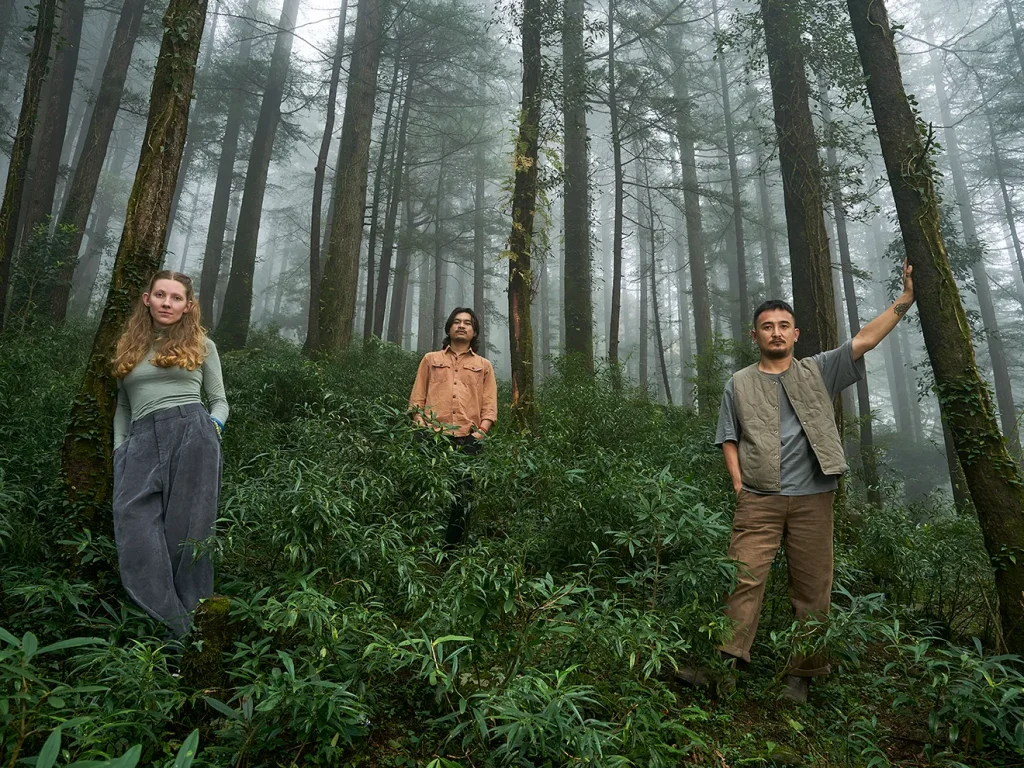
“We were deeply moved when we first heard about the award,” the founding members shared. “As a young collective, being recognized by an institution with such a long history in Himalayan art makes us feel truly seen and valued. This recognition strengthens our confidence and encourages us to keep growing. Most importantly, it changes what is possible for Khadhok, allowing us to build a strong foundation that truly lasts and supports artists and our community for many years to come.”
Additionally, the Rubin selected 15 recipients for its 2025 Research and Art Projects grants, distributing $200,000 in total funding. The grant program, also initiated in 2024, supports artistic and research endeavors that celebrate the cultural heritage and contemporary traditions of Himalayan regions. From 132 applications, the chosen projects received grants between $3,000 and $25,000, determined by each project’s scope, potential impact, and requirements. A complete list of grant recipients appears below.
“Working with Himalayan art and living artists has been part of our approach since the Rubin was founded in 2004,” stated Jorrit Britschgi, executive director of the Rubin Museum of Himalayan Art. “As a museum without walls we hope to increase visibility and awareness of Tibetan and Himalayan art globally.”
Combined, the Rubin Art Prize and grants program will deliver $230,000 in direct funding to artists and researchers connected to the Himalayan region.The full list of Rubin Art Grantees is as follows:
Nawang Tsering & Jamyang Tenzin
Tibetan School Art Curriculum: Teaching Resources & Materials for Art Educators
$22,000
VAST Bhutan
The Lungta Art Festival (LAF) 2026
$15,000
Tenzin Tsering (Tenzoni)
Threads of Camp Mountain
$15,000
Khyenle
Lima Bronze Snow Leopard Art Project – Recycling with Cultural Heritage
$18,000
White Crane Films (Ritu Sarin and Tenzing Sonam)
The Earth Is My Witness
$12,000
Human Clay Productions CIC
Weaving the Threads of Bhutanese Heritage
$18,500
Lujan Rai Dongol
Wheel of Life – A Contemporary Reimagining of Samsara
$5,000
The full list of Rubin Research Grantees is as follows:
Studio Nyandak
Documenting and Safeguarding Zanskar’s Buddhist Heritage
$25,000
Treasure Caretaker Training
Preservation of Buddhist Art in Mongolia: Research and Training for Painters and Community Members in Charge of Conservation in Remote Areas
$20,000
Loden Foundation
Documenting Thangkas and Religious Artifacts of Sumtrhang Samdrup Chödzong
$19,500
Chiara Bellini (with Edoardo Ferrari and Sabrina Ciolfi)
Feeding the Fire or Worshipping the Ashes? Divergent and Controversial Approaches to the Restoration of Himalayan Artworks
$12,500
Dawa Gyalpo, Tandin Paljor, and Shiriin Barakzai
Documenting Cham Dances in Kham
$6,250
Kalzang Dorjee Bhutia
Reuniting the Temple: Recovering and Returning Sikkimese Buddhist Knowledge and Material Culture from Museums to Mountains
$5,250
Suyog Prajapati
Assembling Courtyard Cities: Architecture and Monasticism in the Kathmandu Valley (ca. 15th–18th Century)
$3,000
Briana Brightly
Anatomy of the Buddha: Visualizing the Body in Tibetan Medicine, 1687–1900
$3,000
Featuring Image Courtesy: The New York Times
Contributor
